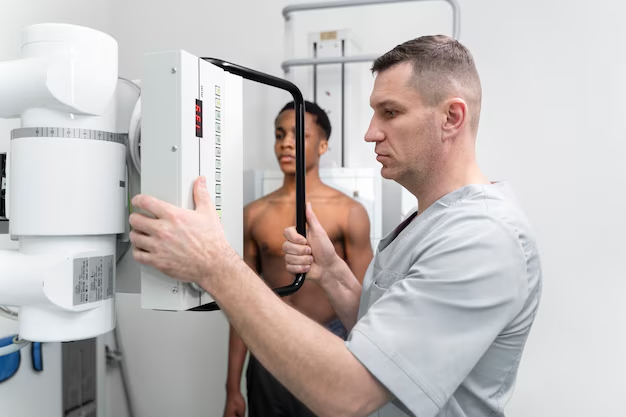Troubleshooting and Repairing Your Refrigerator: A DIY Guide to Keep It Cool
When your refrigerator starts acting up, it can be a major inconvenience, threatening to spoil the food and disrupt daily life. Before calling a professional, many common issues can be addressed with a little DIY knowledge. In this comprehensive guide, we'll explore a range of do-it-yourself refrigerator repair tips to save you time, money, and stress.
Understanding Your Refrigerator
Before diving into repair solutions, it’s crucial to understand how your refrigerator functions. At its core, a refrigerator uses a coolant to remove heat from the interior, maintaining a consistent cool temperature. This is achieved through a cycle of evaporation and condensation, aided by components such as the compressor, evaporator, condenser coils, and fans. A grasp of these basics can illuminate why some issues occur and how they might be fixed.
Common Refrigerator Problems and How to Fix Them
1. Refrigerator Not Cooling
Symptoms: You might notice spoiled food or that the fridge doesn't feel cold enough.
Potential Causes and Solutions:
- Thermostat Settings: Incorrect thermostat settings are a common cause. Ensure the temperature is set to the manufacturer’s recommended level.
- Dirty Condenser Coils:Tip: Unplug the fridge and clean the coils found either at the back or the bottom, using a vacuum or brush. This should be done regularly to ensure optimal performance.
- Faulty Door Seals: Check if the rubber gaskets are sealing properly by closing the door on a piece of paper. If it slides out easily, consider replacing the seals.
2. Refrigerator Noisy
Symptoms: Annoying buzzes, clicks, or hums that were not present before.
Potential Causes and Solutions:
- Leveling: Ensure the fridge is level on the ground, as an uneven surface may cause vibrations and additional noise.
- Internal Fans: Sometimes noise originates from the evaporator or condenser fan. Inspection and cleaning can help reduce noise—be sure the fridge is unplugged during maintenance.
3. Water Leakage
Symptoms: Puddles under or around the refrigerator.
Potential Causes and Solutions:
- Clogged Defrost Drain:Tip: Use warm water to flush the drain located inside the fridge's back wall near the floor to clear any clogs.
- Water Supply Line Issues: Inspect the water line used for the ice maker or water dispenser for any leaks or disconnections.
4. Ice Maker Not Functioning
Symptoms: Lack of ice or decreased ice production.
Potential Causes and Solutions:
- Check the Water Filter: Often a clogged filter reduces the ice flow. Change the filter every 6 months to ensure optimal water flow.
- Ice Maker Arm: Ensure the ice bin arm isn’t mispositioned, which can prevent ice production. Straighten the arm to resume ice making.
Tools for Basic Refrigerator Repair
Essential Tools You May Need
- Screwdrivers: Both flathead and Phillips.
- Multimeter: For testing electrical components.
- Vacuum Cleaner or Coil Brush: For cleaning coils.
- Pliers and Wrenches: Handy for tightening connections.
Safety First!
Before beginning any repair:
- Unplug the Refrigerator: Always disconnect the power supply to avoid electric shock.
- Protect Your Space: Have towels or trays ready in case of water spills.
When to Call a Professional
While many refrigerator issues can be handled at home, some problems require expert assistance:
- Compressor Issues: As the heart of the refrigerator's cooling system, compressor repairs are best left to professionals.
- Refrigerant Leaks: Handling refrigerants without proper certification can be dangerous and is often illegal.
- Electrical Failures: If electrical components like the control board or timers are faulty, a technician’s expertise is advisable.
Preventative Maintenance
Regular Tips to Extend Your Refrigerator's Lifespan:
- Monthly Cleaning: Clean door seals, dust condenser coils, and ensure vents aren't obstructed.
- Balanced Load: Avoid overloading the fridge, which can strain components.
Troubleshooting Made Easy: A Quick Reference
Find Your Solution Fast!
Here's a concise rundown of common issues and DIY tips.
| 🚨 Issue | 🔧 Troubleshooting Steps |
|---|---|
| Not cooling | - Check thermostat settings. |
| - Clean condenser coils. | |
| - Inspect door seals. | |
| Noisy operations | - Ensure unit is level. |
| - Clean internal fans. | |
| Water leakage | - Clear defrost drain. |
| - Check water supply lines. | |
| Ice maker issues | - Replace water filter. |
| - Adjust ice maker arm. |
Embracing DIY for Your Refrigerator
By taking the reins of basic refrigerator maintenance and repairs, you can ensure your appliance remains in top shape, save money, and extend its lifespan. This DIY approach not only empowers you to tackle household challenges but also cultivates a deeper understanding of the appliances we rely on daily. Remember, the key to effective refrigerator repair is knowing your limits and seeking professional help when necessary. With the insights from this guide, you're well-equipped to keep your fridge running smoothly and efficiently. 🚀
